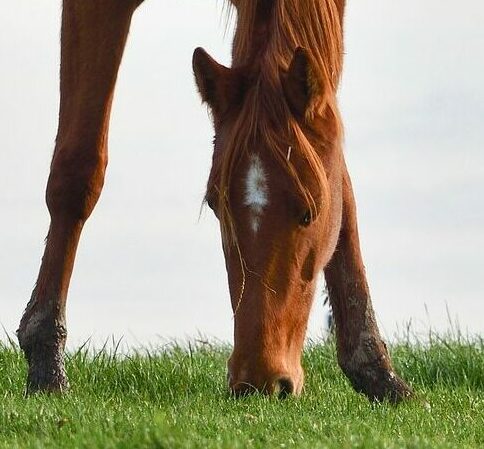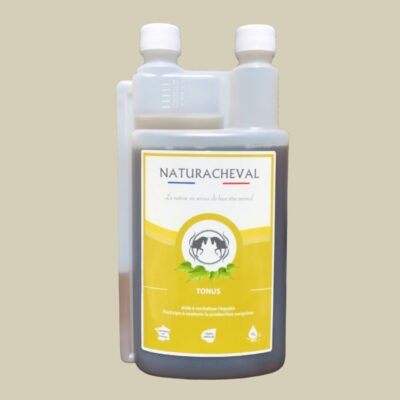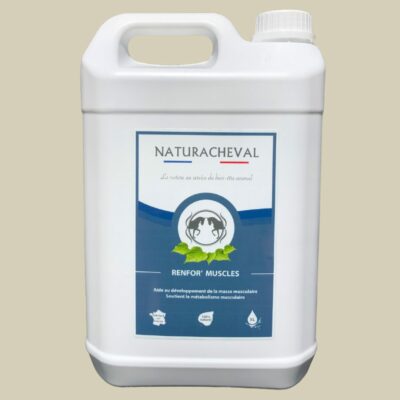IT’S TIME: putting it out to pasture
14 March 2023

With the arrival of spring, nature is reclaiming its rights: more water, greater radiation, milder temperatures, all the factors are present for the grass to grow again after the winter break. This growth can be explosive in some regions, so the return of grass would push us to put our horse out to pasture. However, certain instructions (adapted feeding, progressive pasture) and certain precautions (such as a draining cure) are to be applied so that everything goes well for your horse.
WHEN TO PUT YOUR HORSE OUT TO PASTURE?
The meadow can be used for grazing when the grass reaches a height well above 5cm, rather between 8 and 10 cm. Indeed, below this height, the young grass is richer in sugars (fructans) and parasites: as a general rule, the lower the pasture, the greater the risk of contamination. By letting the grass regenerate and preventing the young grass from being eaten quickly, you also ensure that the grass in your meadow is maintained. Your horse will be able to enjoy this meadow for many months.
In addition, it is advisable to wait for the soil to dry out before putting the horse out to pasture. Wet soil is not conducive to grazing because it is very malleable and would quickly collapse under these 4 hooves. Soil compaction (compaction) would cause a low circulation of air in the soil, which is crucial for the soil, plants and micro-organisms.
WHAT PRECAUTIONS SHOULD BE TAKEN?
During the winter months, horses, whether in the box or in the meadow, are generally fed with hay, pellets and cereals. The return of spring and its fine weather leads to an enrichment of the pasture grass. The horse’s diet is therefore modified: after a few months of dry fodder rich in crude fibre, the horse will be able to eat grass that is much richer in sugars, fattier and more moist. Before and during the horse’s grazing, it is important to accompany it so that it is beneficial for your horse and that he lives it serenely.
Due to its anatomical characteristics, the horse’s digestive tract is sensitive. Abruptly changing your diet and lifestyle can lead to upheavals in the horse’s intestinal flora. It is therefore recommended to carry out this transition gradually over 15 days. The body will thus be able to adapt to this new food ration, and this will avoid the risk of colic or laminitis. For a horse that has not eaten grass during the winter, it is advisable to take it out to graze for 30 minutes for the first few days, then increase the duration gradually. Nevertheless, it remains a guideline, it is necessary to know the richness of the grass that the horse will ingest in order to adapt the exposure time as well as the feed ration in the box. If this restriction of grazing time is complicated to implement, you can make the dietary transition gradually by incorporating fresh cut grass into its ration.
Grass in spring is very rich in sugars, including fructan, a sugar that takes a long time for the horse to digest (like starch), which leads to a clear increase in the energy ingested by the horse. Spring grass also provides a lot of lipids, proteins, mineral salts, trace elements and vitamins. In this phase of dietary transition, it is therefore essential to adjust the feed ration of dry fodder from day to day, in order to avoid weight gain, metabolic disorders, laminitis (for horses suffering from Cushing’s syndrome for example).
CARRY OUT A DRAINING CURE TO PREPARE FOR PUTTING OUT TO PASTURE
To best support the digestive system during this period, it is advisable to carry out a draining cure during these weeks of dietary transition. Our DETOX relieves the clogging of the liver and kidneys, eliminates toxins, and thus lightens and cleanses the body as a whole. This internal drainage strengthens the horse’s body in order to get through this grazing process serenely and without metabolic disorders. You can find all the information on our product sheet.
Grazing is therefore an important step that must be prepared, by observing the soil, the meadow and its horses. Each horse is different, each meadow is different, so it is necessary to make sure that the transition is adapted for the horse, and thus to support this dietary transition as best as possible.



